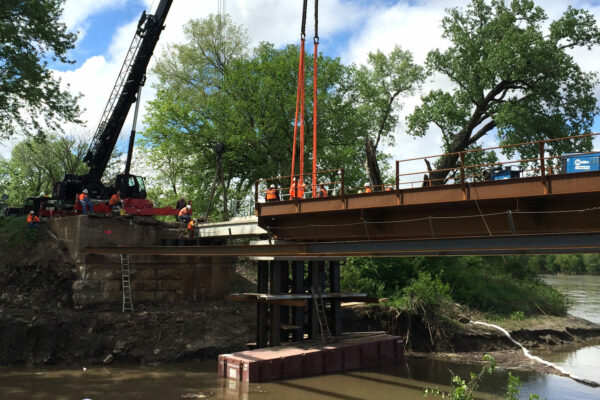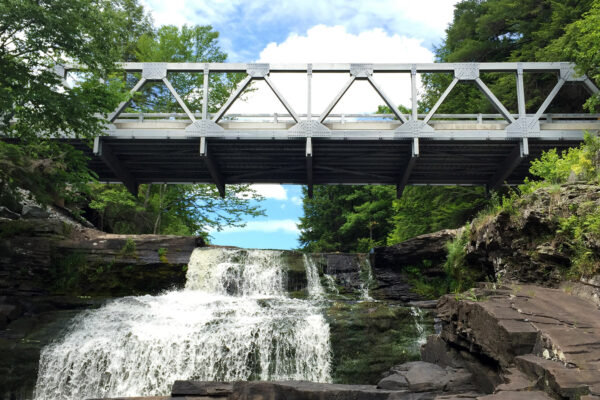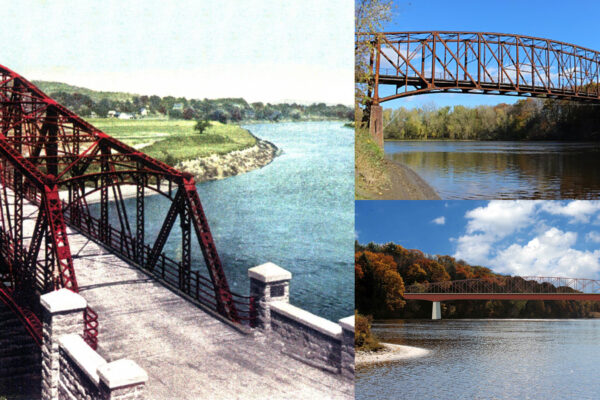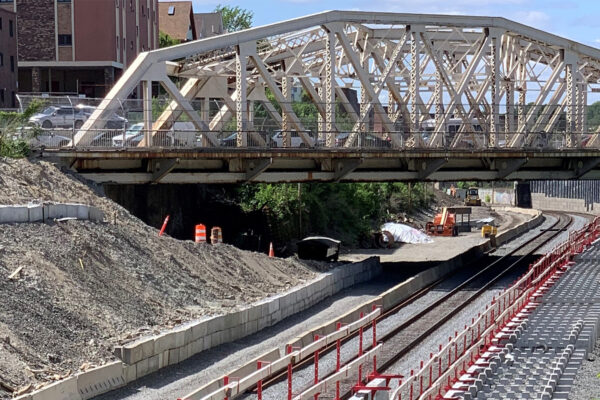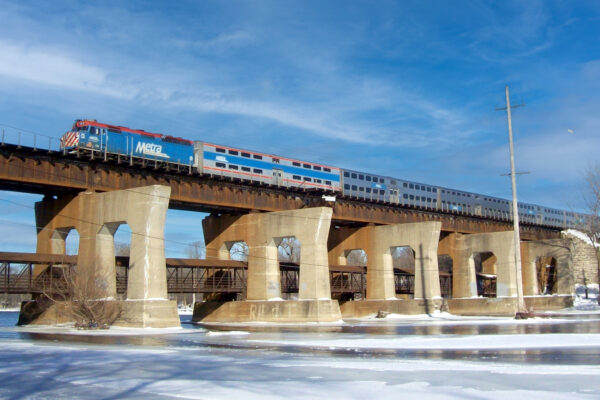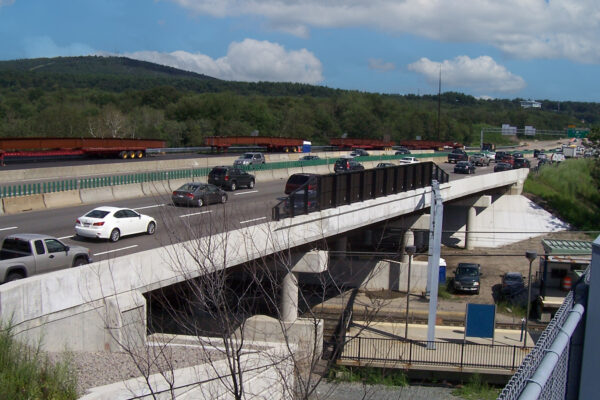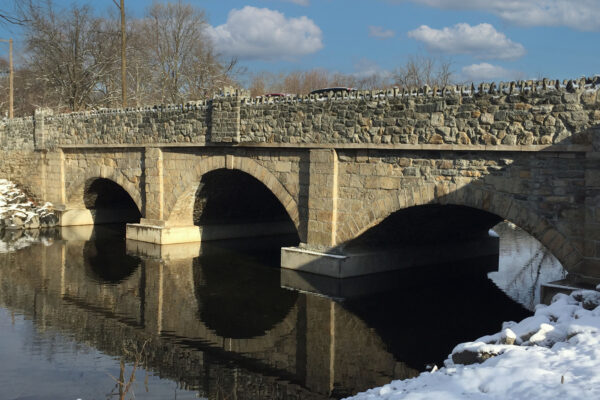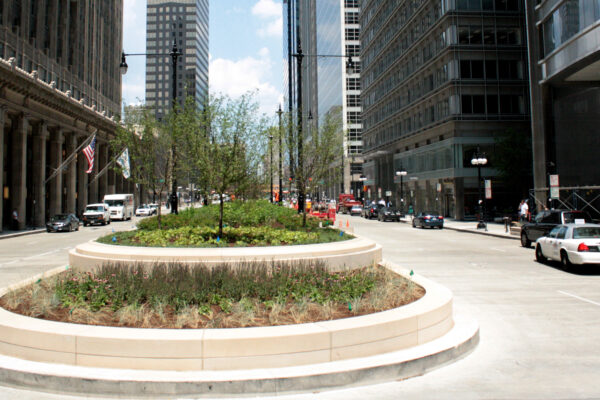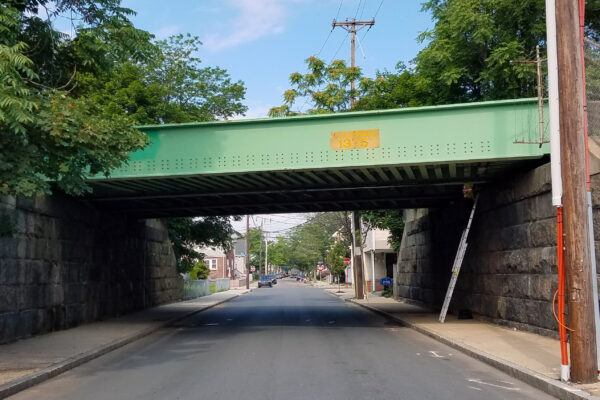Noland Road over I-70 Interchange
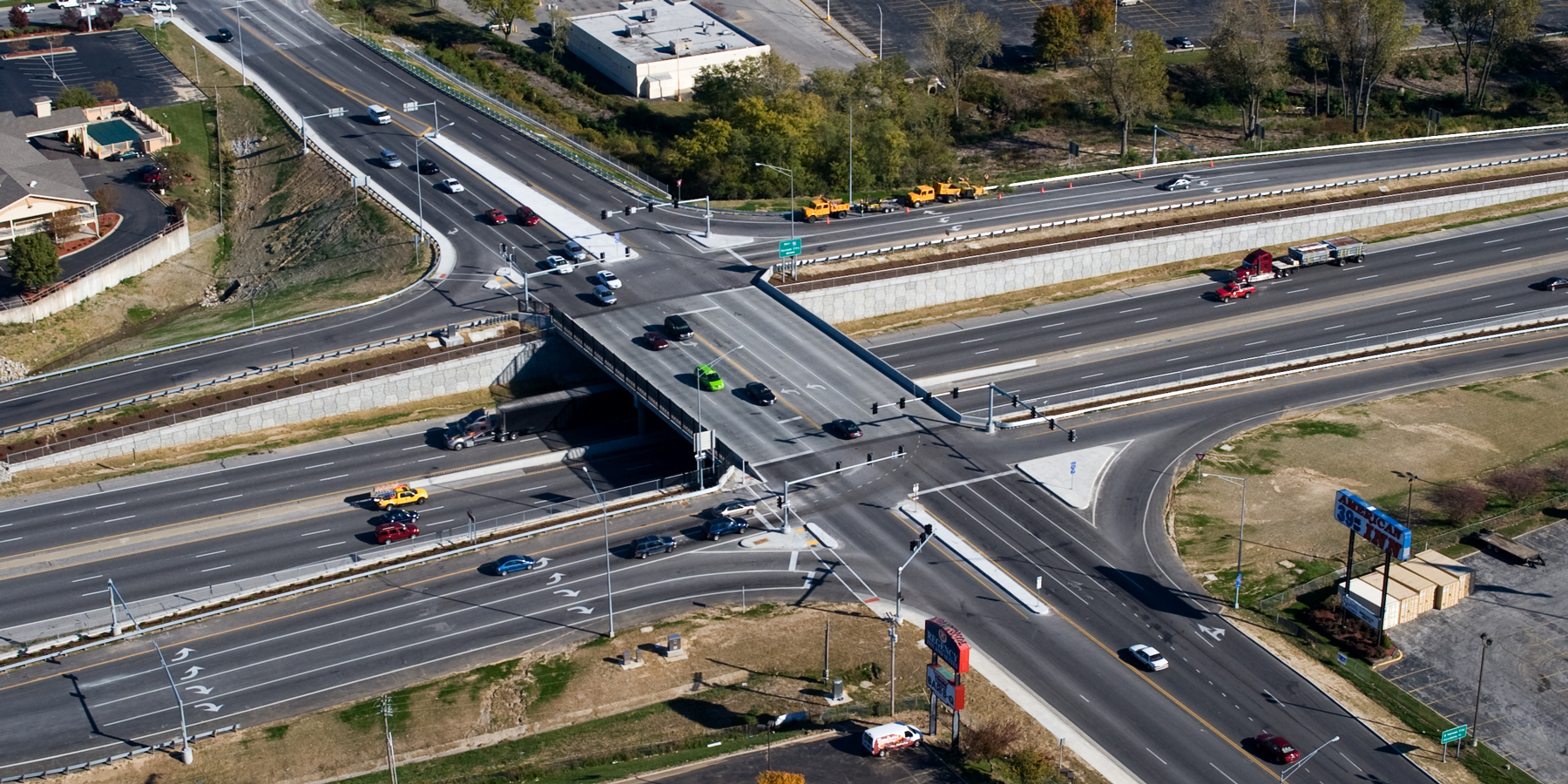
The Noland Road over I-70 interchange exemplifies Benesch’s capability to minimize construction costs and time on large projects that are critical to community businesses, as well as adapt to evolving design criteria. Benesch was selected to perform conceptual, preliminary and final design of the interchange. The final bridge design was a two-span prestressed concrete box girder bridge carrying an 85-foot roadway and sidewalk. Drilled shafts were used for the center bent foundations.
The original design concept for the interchange called for a Single Point Urban Interchange with a 200-foot-wide bridge, which would extend the interchange to the point that a railroad bridge west of the project would also need be replaced. The total estimate for the project budget was originally over $33 million.
By applying innovative design techniques such as tight urban diamond with MSE walls, prestressed concrete box girders and eliminating staged construction, the cost of the project was reduced to a final estimate of about $7.5 million. Several major factors played a role in the design of the interchange. The largest factor was ROW constraints, since the interchange was surrounded by businesses that would be expensive to purchase. Also, the bridge was required to span additional planned future lanes of I-70. By using a tight urban diamond interchange utilizing MSE walls to support the ramps and abutments, the bridge span length and the ROW conflicts were minimized.
Time was also a major factor, as the business community in the area considers the interchange vital. By communication with the business owners through town hall meetings, it was decided that although staged construction would leave the bridge open for traffic, the prolonged construction would ultimately hurt business more than closing the bridge for a short time. To further speed construction time, an alternate design was included in the project utilizing a six-foot-wide prestressed box girder which had never been used before, therefore reducing the number of girders required for erection. Finally, vertical clearance over I-70 was addressed by using low profile prestressed concrete box girders as opposed to steel girders, which minimized the depth of the bridge and the change in grade elevation.

